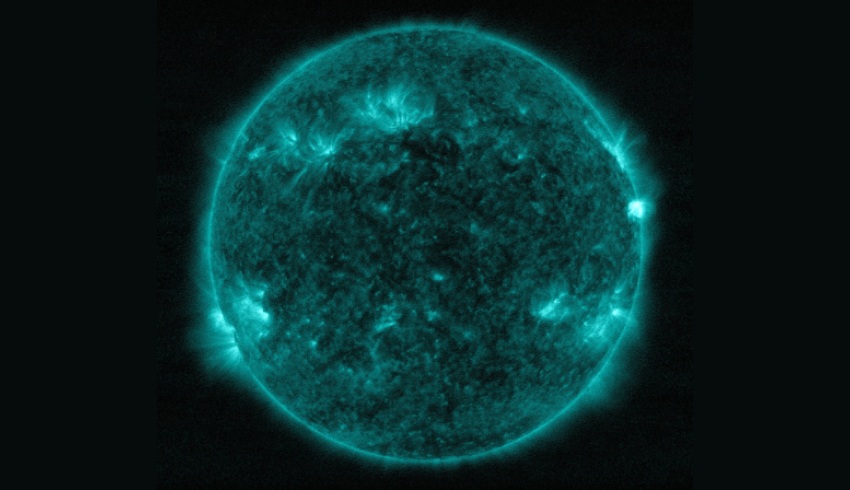The solar flare was produced on 20 January, seeing its peak at 1:01am EST and the image was captured by NASA’s Solar Dynamics Observatory which watches the sun’s activity constantly.
Solar flares are large eruptions of electromagnetic radiation, and can last from minutes to hours, NASA says.
“Solar flares are powerful bursts of energy,” the American agency said in a blog post.
“Flares and solar eruptions can impact radio communications, electric power grids, navigation signals, and pose risks to spacecraft and astronauts.”

NASA said this eruption was classified as an M5.5 moderate class flare, which is considered the second lowest in terms of severity.
During its 11-year cycle, the sun's magnetic field changes polarity – essentially, its inner magnetic dynamo reorganises itself.
From the increased activity comes an emergence of sunspots – areas on the sun that appear darker – which can erupt and send explosions of energy, known as solar winds, or flares, toward Earth.
This is also a reason aurora’s – or Northern and Southern lights – will appear more frequently, as reported by Space Connect in November when the International Space Station astronauts were treated with one before returning to Earth.
“When the solar wind reaches Earth’s magnetic field, it can cause magnetic reconnection, an explosive process that allows charged particles from space to accelerate into the atmosphere,” NASA says.
According to Bill Murtagh, program coordinator at the National Oceanic and Atmospheric Administration's Space Weather Prediction Center, we are coming to the beginning of a busy season of sunspots from 2023 to 2028.
"The last several years really we've had very little activity, as is the case during solar minimum, but now we're ramping up and ramping up quite fast into the next solar cycle maximum,” Murtagh told Space.com
"We're seeing the increase in activity that one would expect with this rise in the solar cycle," Murtagh added. "This is kind of our awakening phase."

Isabella Richards
Bella Richards is a journalist who has written for several local newspapers, her university newspaper and a tech magazine, and completed her Bachelor of Communications (Journalism) at the University of Technology Sydney in 2020. She joined Momentum Media in 2021, and has since written breaking news stories across Space Connect, Australian Aviation and World of Aviation.
You can email Bella on: [email protected]

